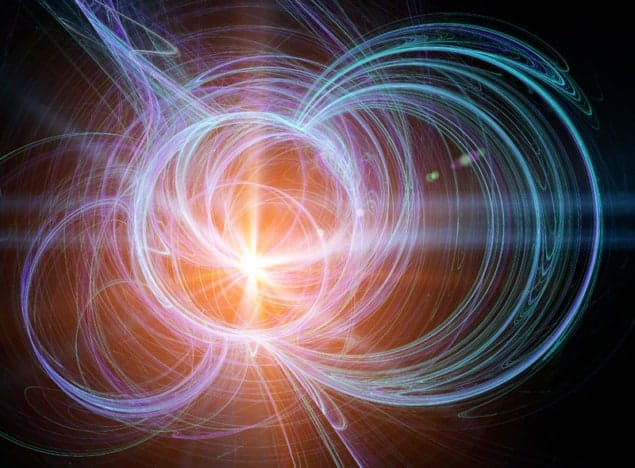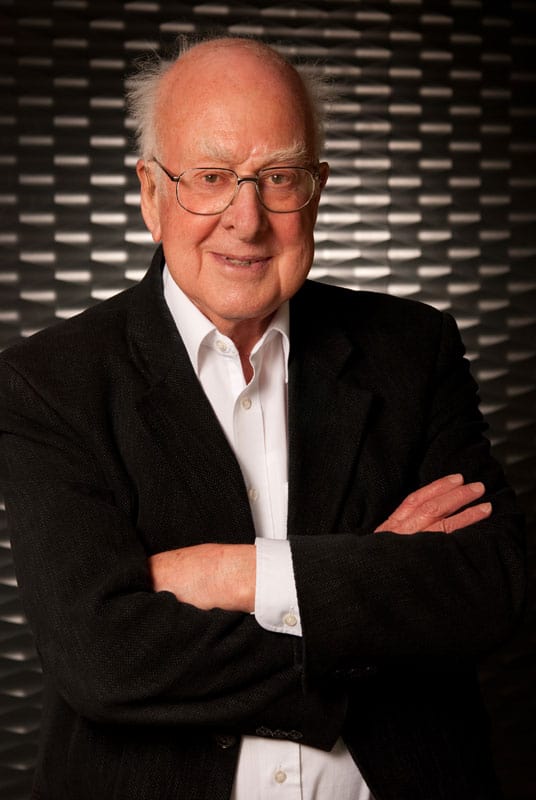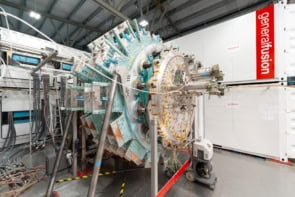Gordon Fraser and Michael Riordan argue that the boson discovered at CERN should be known not as the Higgs boson, but the "higgson"

Now that a fundamental scalar boson has finally turned up and become real, it is time to give it a better name. We advocate calling it the “higgson”.
“Higgs boson” or “Higgs particle” is a real mouthful; it’s too long and awkward. No wonder physicists trim it down to “the Higgs”. But that just invites questions: the Higgs what? field? mechanism? mass? It’s too ambiguous. Something seems seriously amiss with the existing nomenclature.
And why do we want to keep highlighting one physicist’s formal surname, when at least five others were involved in conceiving the core ideas underlying this particle? Some have suggested we resolve the problem by calling it the BEH boson or EBH particle, but both fall flat phonetically and leave us cold. To continue following that logic, we could perhaps call it the BEHGHK boson. Or how about the ANGBEHGHK particle? You get our point.
As Frank Close recently detailed in The Infinity Puzzle, Peter Higgs made the clearest statement that the symmetry-breaking mechanism involved would have observable consequences: a scalar boson corresponding to oscillations in the underlying field. Thus it makes sense to associate his name with this boson, at least informally. But that doesn’t mean we have to capitalize it explicitly.
We can just call this particle the higgson.
Such a label can then take its rightful place alongside other classic particle names, such as the electron, proton, neutron, neutrino, quark and gluon. That includes the labels used for entire classes of particles such as leptons, hadrons, mesons, baryons, fermions and bosons – for still other higgsons may well exist.
The names electron and proton established a distinguished trend that has lasted a century. When competition arose for the neutron label, between Rutherford’s neutral nuclear inhabitant and Pauli’s beta-decay product, it eventually was settled in favour of the former, while the latter became Fermi’s “neutrino”. All great names.
With the advent of particle accelerators during the 1950s and 1960s, two whole alphabets – Greek and Roman – had to be mobilized as the list of putatively elementary particles burgeoned. One particle stood out, borrowing its name from both: the famous J/Ψ that we’ve lived with now for almost 40 years.
It took the genius of Murray Gell-Mann – who possesses a real naming gift – to recognize that the list was becoming unmanageable and establish a different way to label particles found at the next lower level of matter. Reaching into James Joyce’s Finnegan’s Wake, he lifted the word “quark” from the drunken dream of Humphrey Chimpden Earwicker to name the odd, fractionally charged fundaments that had cropped up as a result of his SU(3) theory. Happily, it stuck.
Soon we had humdrum up and down quarks, but intriguing strange and charm quarks. After a third family of elementary particles turned up, the elegant names truth and beauty gradually succumbed to the more commonplace top and bottom. All these fanciful quarks stuck to one another by swapping rather prosaic gluons.
After Gell-Mann, particle physics seemed to be running out of imagination. With all the appeal of an intellectual cold shower, the emerging paradigm was labelled the Standard Model. Scientifically it was ambitious, but this phrase was not very useful in cocktail-party conversations with colleagues from other fields. Electromagnetism became wedded to the weak force in the electroweak force, a good name, but it was carried by vapid “intermediate vector bosons” called W and Z.
And at the heart of the new theory, shrouded in mystery, was a symmetry-breaking mechanism that preserved gauge invariance (which has served electromagnetism well) but allowed elementary particles to gain heft. It had been assembled bit by bit during the early 1960s through the concerted efforts of more than a dozen theorists. You have to fill the bathtub before you can shout “Eureka!” But despite this great communion of minds, it eventually came to be known as the Higgs mechanism after just one of its principal proponents.
Along with this mechanism came the need for a new scalar boson (or bosons), similarly dubbed. Leon Lederman used an entire book to try to rename it the “God particle”. But that was a little too much for agnostic particle physicists, who clung stubbornly to the “Higgs particle”. And after looking in almost every accessible nook and cranny for the past four decades, they have at long last discovered this elusive, quintessential quarry.
One episode in this century-long naming saga strikes us as particularly relevant in giving the scalar boson an appropriate moniker. With the 1920s rise of quantum mechanics, physicists recognized that wave functions could be symmetric or antisymmetric. As with the symmetry-breaking mechanism of the early 1960s, many physicists contributed, but symmetric wave functions came to have Bose–Einstein statistics and antisymmetric ones Fermi–Dirac statistics. Soon the corresponding particles became known as “Fermi particles” and “Bose particles”, dropping two eminent physicists’ names but saving speakers several syllables.
Then in December 1945 Dirac gave a public lecture on atomic theory in war-ravaged Paris. The audience was hoping to hear about the atomic bomb, but he spoke instead about arcane topics in quantum mechanics that few understood. In the process he introduced two new words into our lexicon. Instead of Fermi particles he talked about “fermions”, and he called Bose particles “bosons”. Dirac’s new names eluded most of the audience, but they caught on among physicists, to our great benefit.
In the same vein, it’s time we stop calling the scalar boson the Higgs boson or the Higgs particle and start calling it something better. Physicists have lower-case names for important measurement units such as newton, coulomb, ampere, volt, ohm, watt and kelvin. Why can’t we do something similar for this fascinating new particle?
Let’s call it the higgson.




